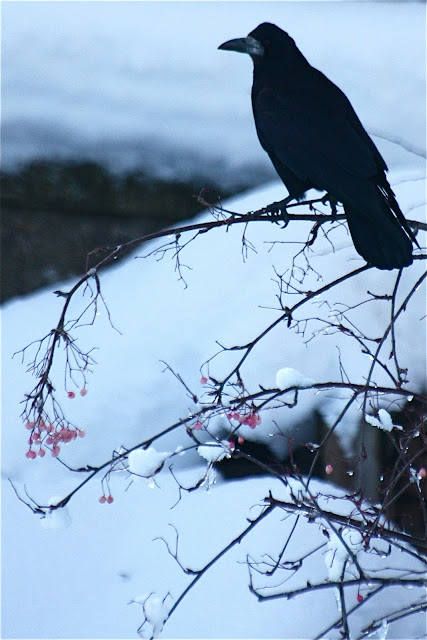Well, as promised, I checked the garden for Waxwings at breakfast. No luck there, but I did see a flock of about 30 of them flying overhead at Myreside, Edinburgh, when slewing through the snow on the school run, so I returned to my desk pretty pleased.
At lunchtime I had another look. Sure enough there was a bird balancing on the rowan I planted especially for the waxwings last year – but a Rook no less. Yet another species normally restricted to fly-by sightings forced in to the feeding area by this extreme weather.
I have not actually counted the number of species that have used the garden at some time or other in the five years we have lived here, but in the last few days it is certainly a growing proportion of the 68 species on my 'in or from the garden list'.
The white patch at the base of the bill and the exposed nostril indicate that today's bird is probably an adult. With a less extensive pale base to the bill, and a ridge of feathering covering the nostril, young first year Rooks are more similar to the Carrion Crow. Here is a photo of a first calendar year (1CY) Rook on Fair Isle in October. The pale base is developing on this bird's bill but the ridge of feathering is clearly still present. There were at least 3 of these young birds on Fair Isle that day, where they are an uncommon passage migrant, either from neighbouring islands or the Continent.
While we still have a few hard winter months to get through, Rooks are early nesters. It won't be too long until the rookeries are full of their noisy breeding behaviour again. Here is a shot taken in early April looking down into the rookery at Cream of Galloway. To get this view you need to scramble to the top of a large fun climbing tower. My own kids weren't too impressed though when I stopped for some birding at the top. As for the Rook, I am sure she couldn't wait for those buds to burst and give her some privacy.




No comments:
Post a Comment